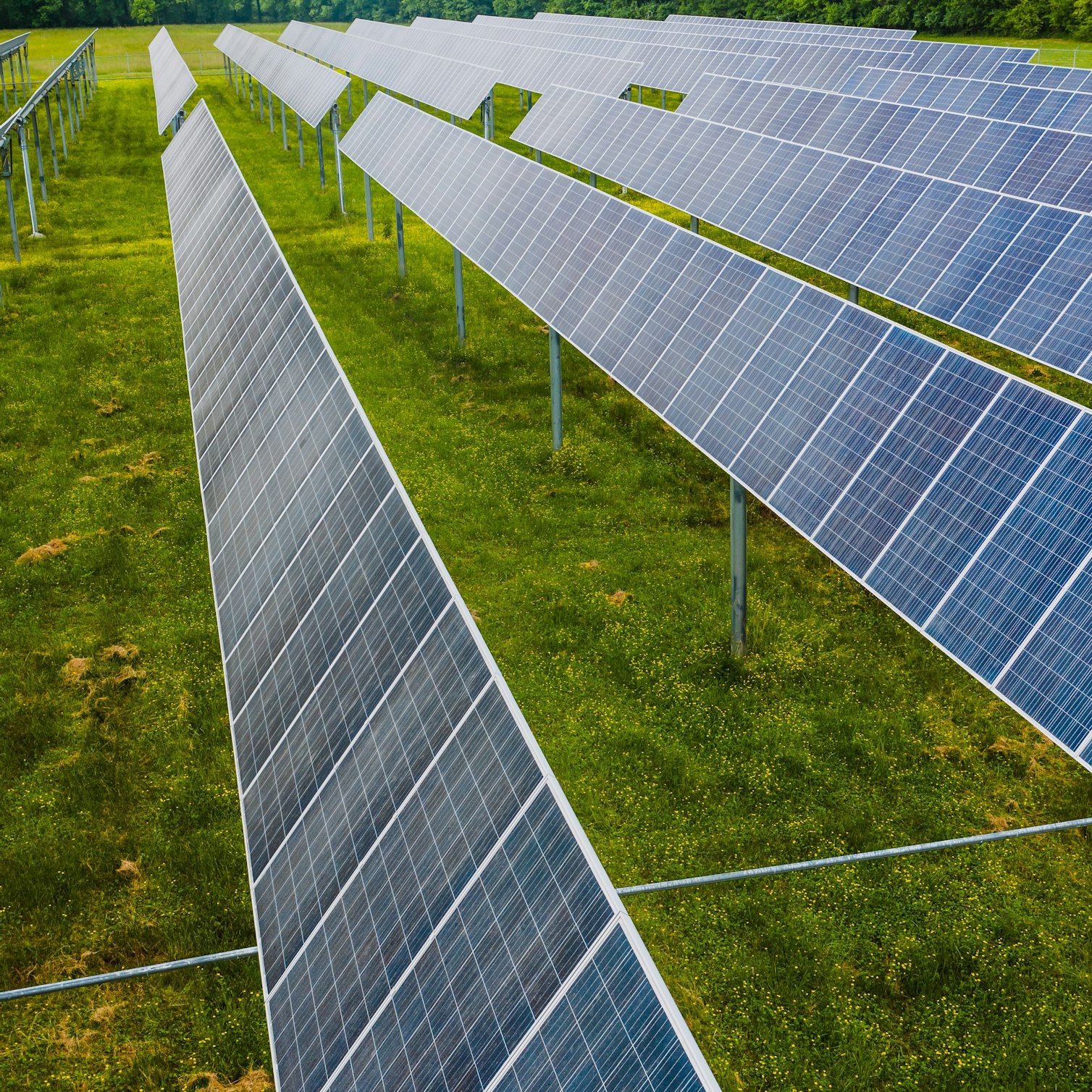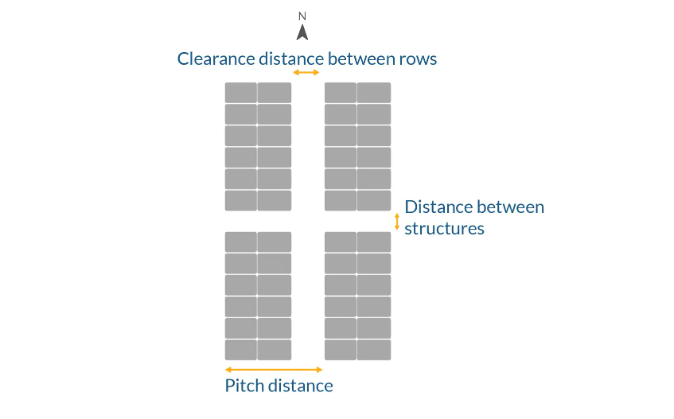- Solar energy blog
- What is the pitch distance and why is it important?
What is the pitch distance and why is it important?


Hassan Farhat
Lead Technical Advisor
Hassan Farhat has a background in Energy Engineering and excelled in his Master of Science in Renewable Energy in Electrical Systems. More than three years ago, he joined the RatedPower technical team, where he works as a Solar Photovoltaic Engineer and Customer Success Manager at RatedPower.
Hassan has a thorough understanding of the industry and of RatedPower’s pvDesign, the digital solution to reduce LCOE and maximize productivity of utility-scale PV plants. He's passionate for renewable energies and their role within the global environmental transition.

Content
Solar power generation has an important role to play in the energy mix — especially as the world makes a transition away from fossil fuels.
Getting the most out of a solar photovoltaic (PV) plant will deliver the highest energy output from the smallest number of solar panels, making the best use of available land or rooftop space and ensuring the highest return on investment. This, in turn, makes projects more viable, particularly at utility scale.
The maximum electricity output from each solar panel will depend both on the environmental conditions and the design of the plant, including the tilt angle and spacing between panels. A well-designed PV plant will balance costs against system efficiency to provide the lowest levelized cost of energy (LCOE).
In this article, we look at:
What is a pitch distance?
The importance of pitch distance in maximizing efficiency at utility-scale solar plants.
How does the pitch distance affect the output?
How to calculate the optimal pitch distance for your PV project?
What is a pitch distance?
Pitch distance in a solar installation refers to the distance from the axis of one tracker to the next. This affects the plant’s ground coverage ratio (GCR), which refers to the ratio of how much area is covered by PV modules.
The optimal position for a PV panel is facing south at an angle from the horizontal to capture the most sunlight in the morning and evening when the sun is lower in the sky, as well as in the middle of the day when it is at its height.

Source: RatedPower
That said, the best position for each solar installation varies depending on the geography and topography of the site. As an example, it is crucial to take the latitude into account.
The further away from the equator a solar plant is located, the higher the angle at which the panels are tilted needs to be — and the larger the spacing between panels required to limit lost electricity generation caused by shading from adjacent panels.
This is one way in which RatedPower solar PV plant modeling software helps to optimize utility-scale plant design to get the highest possible efficiency. You can modify the pitch distance to see the corresponding clearance distance and GCR.
By default, the software sets around 40% GCR for trackers and recommends a pitch distance that ensures at least 4 hours of non-shaded solar generation on the shortest day of the year (in the winter solstice). Nonetheless,, users can modify this value to optimize their PV plants based on their specific needs.
Learn the ins and outs of how to pick the ideal PV technology stack for your development or EPC team. Read our solar software guide.
How does pitch distance affect output?
Why does the pitch distance matter in a PV plant? As the sun moves across the sky during the day, and throughout the year depending on the season, the angle that sunlight hits PV panels changes and affects the amount of shading that occurs from the surrounding structures.
Modifying the pitch distance affects how much each row of solar panels is shaded by the adjacent rows, which reduces the amount of sunlight they can absorb.
Increasing pitch distance spaces out the structures to decrease the level of array shading, allowing the panels to convert more sunlight into energy. But having more space between panels reduces the number of rows that can fit onto a rooftop or area of land. This results in a plant having less installed capacity or requiring more spending on land to reach the desired capacity. It also requires longer wiring between structures, causing cabling costs to rise.
This trade-off makes pitch distance an important parameter for PV plant designers to optimize. The right pitch distance will ensure that there is a good balance between installed capacity and energy yield.

What is the optimal pitch distance?
There is no set calculation for optimal pitch distance as it varies based on the characteristics of each site. A very low pitch distance can cause excessive shading between structures in a PV plant, reducing each panel’s efficiency to an extent that the project would fail to generate an adequate return on investment.
On the other hand, while a large pitch distance can prevent array shading so that each panel runs at high efficiency, it would limit the number of panels that can be installed on a site. This in itself may mean that the plant cannot cover enough capacity to make the investment viable.
It is because of this that a plant’s optimal pitch distance will be the distance that reduces array shading as much as possible while ensuring the space can fit enough panels to meet the site’s required generation capacity. The optimal distance can vary considerably between sites depending on the geographic location, the type of structure, as well as the site’s configuration.
Have you ever wondered how a solar developer can optimize their PV plant projects at the very early stages? We did a webinar from a developer POV to show you how we do it with RatedPower. Watch it for free.
Project planners can compare designs for a site with different pitch values using the batch tool and comparison tool together to find the right pitch distance for a more optimized design.
Using RatedPower batch tool, users can create up to 10 site designs with different pitch distances simultaneously. They can then use the comparison tool to check which design offers the most optimal results in terms of energy output and performance ratio, which one has the highest installed capacity, and which one offers a lower LCOE. RatedPower highlights the best design under each category, helping designers to choose the most efficient option based on the site’s specific characteristics.
Takeaways
As we have seen, choosing the right pitch distance is an important decision to make to reduce the LCOE of a utility-scale solar PV plant and maximize its return on investment.
RatedPower offers tools to help you balance your project’s performance ratio with its installed capacity with the optimal pitch distance. Take a free guided tour to find out how we can help to optimize your site design today.
eBook: Minimize your shading losses with RatedPower
Download this eBook to examine what shading losses are, the different types of shading, and how you can minimize the shading losses of your next PV installation.

Latest stories
Related posts
Technology and engineering
Innovation in renewable energy: Developments expected in 2025
We look at the 10 biggest renewable industry developments that are making a green future possible, including perovskite solar cells, green hydrogen, and more.
Updated 18 MAR, 25

Market analysis
Breaking down solar farm costs: Free template inside
Updated 27 SEP, 21

Market analysis
Solar energy in Australia: a 2021 market analysis
Updated 11 MAY, 21

- RatedPower
- Solar energy blog
- What is the pitch distance and why is it important?

